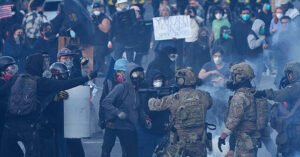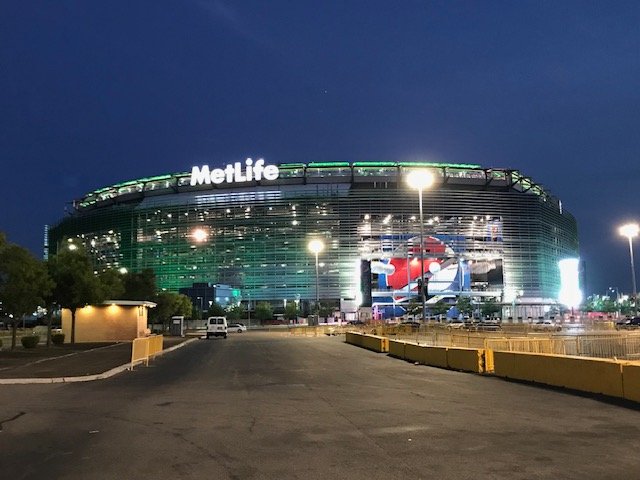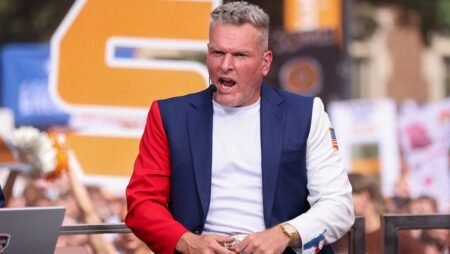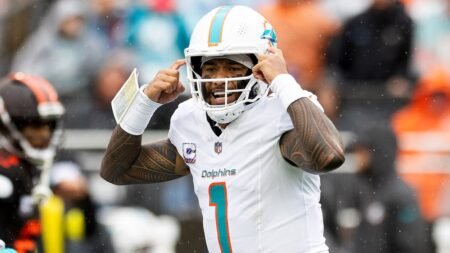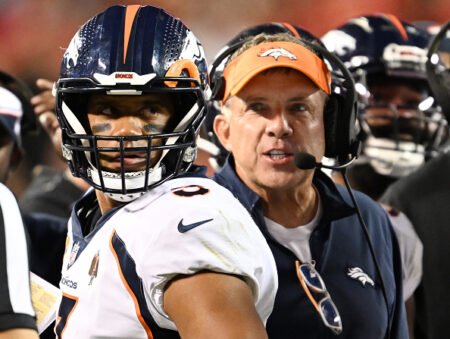Aaron Rodgers, Malik Nabers among high-profile casualties on controversial artificial surface
You saw Aaron Rodgers tear his Achilles at MetLife Stadium in 2023. You saw Giants receiver Malik Nabers tear his ACL there this season and heard Odell Beckham Jr. complain bitterly about the playing surface afterward. But the NFL says the playing surface there and at other stadiums with artificial turf is not a bigger injury concern than grass fields.
Got that?
Photo: Kirby Lee-Imagn Images
NFL Chief: No Injury Rate Difference
All the publicity, most of it negative, about players suffering season-ending injuries on non-grass surfaces is just … wrong, the NFL basically insisted on Tuesday after owners discussed the matter at the league’s fall meeting in New York.
“So we did talk about surfaces today,” NFL chief football administrative officer Dawn Aponte said. “[We] talked about a lot of the ongoing efforts, talking about the focus on the increased consistency, the optimization of playability, and also the reduced injury risk.
“What we’ve seen thus far is not a significant difference in terms of the injury rates on grass versus synthetic – domestically, and internationally.”
Wait, what?

EAST RUTHERFORD, NJ – New York Giants wide receiver Malik Nabers (1) is carted off the field following an injury during the second quarter against the Los Angeles Chargers at MetLife Stadium on Sept. 28, 2025. Photo: Brad Penner-Imagn Images
Injury Data Not Shared
Aponte did not provide the data shared with owners that give the league confidence synthetic turf fields are safe. But that’s the league position now.
Synthetic turf – nobody calls it artificial turf anymore, although that’s exactly what it is – has been the target of complaints from the most important people in the game, the players, for years. Because they’re the ones who play on it and get injured on it or go home sore after playing on it.
All NFL team have grass fields at their training facilities and most prefer to work on that surface to keep players safer and, yes, fresher during the week.
But the league says all that simply does not stand up to statistical data of injuries.
Take MetLife Stadium, for instance. It has been at the epicenter of major injuries to star players for years.

New York Jets quarterback Aaron Rodgers suffers an injury after a tackle from Minnesota Vikings Linebacker Patrick Jones II (91) on Oct. 6, 2024 at Tottenham Hotspur Stadium in England. Photo: Shaun Brooks-Imagn Images
MetLife A Venue Of Injury Attention
Here are some injuries that have happened there, which is the cause of all the doubts about the venue:
- In 2020, Nick Bosa blew out a knee at MetLife. Two plays later, Solomon Thomas blew out his ACL on the same turf surface.
- In 2021, Jabril Peppers tore his ACL at MetLife.
- In 2022, Wan’Dale Robinson, Sterling Shepard and Kyle Fuller tore their ACLs at MetLife.
- In 2023, Rodgers played three snaps at MetLife and suffered a ruptured Achilles on the fourth.
- And in Week 4 of this season, Nabers blew out his ACL.
“As it relates to MetLife,” NFL executive vice president Jeff Miller then pointed out, “they had one of the lowest injury rates, not just as synthetic, but across the league last year.
“So, you know, any injury that occurs on our surfaces, regardless of what they are, are things that we want to investigate and learn from. And if they can be deterred, we want to do that. But as far as how Metlife is playing, it’s playing really well, and it has for a while.”

Camping World Stadium in Orlando. Photo: Nathan Ray Seebeck-Imagn Images
FIFA Demands Grass At MetLife
Got it?
Well, FIFA, the governing body for international soccer, didn’t get that memo.
FIFA’s standard for World Cup venues include a requirement for natural grass rather than artificial turf. And as MetLife Stadium is listed as one of the U.S. venues for the 2026 World Cup, the venue’s artificial field must be replaced for the soccer matches.
And it will be.
Read the full article here

